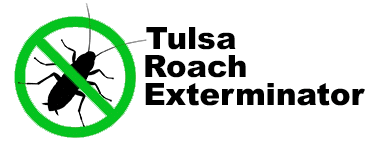German roaches, scientifically known as Blattella germanica, are a common household pest that can cause significant distress for homeowners. These small, light brown insects are known for their ability to reproduce rapidly and infest various areas of a home, including kitchens, bathrooms, and other areas with a readily available food source.
One concern that homeowners often have is whether German roaches can travel from house to house, potentially infesting multiple residences. In this article, we will explore the habits and capabilities of German roaches to determine if they can indeed travel from one house to another.
German Roach Behavior
German roaches are highly adaptable and resilient insects that can survive in a wide range of environments. They are primarily nocturnal and prefer dark, warm, and humid areas. These pests are attracted to food sources such as crumbs, grease, and other organic matter, making kitchens and pantries their preferred habitats.
While German roaches tend to stay close to their food and water sources, they can also move to neighboring areas within a home. They are excellent climbers and can easily crawl up walls, cabinets, and pipes to access new areas. This ability to navigate through small cracks and crevices allows them to move from room to room, potentially spreading their infestation within a single house.
Can German Roaches Travel from House to House?
German roaches have the potential to travel from house to house, but it is not their preferred mode of transportation. These pests are not strong flyers and do not possess wings that enable them to travel long distances. Instead, they rely on human activity, such as hitchhiking, to move from one location to another.
German roaches can inadvertently be transported from house to house through various means. They often hide in cardboard boxes, grocery bags, or other items that are being moved from one place to another. If an infested item is brought into a new residence, the roaches can quickly establish a new population.
Another way German roaches can travel between houses is through shared walls or plumbing systems. These insects can crawl through small openings or gaps in walls, pipes, or ventilation systems, allowing them to move from one dwelling to another.
Preventing the Spread of German Roaches
To minimize the risk of German roaches spreading from house to house, it is essential to take preventive measures. Here are some steps you can take:
- Seal cracks and crevices: Inspect your home for any openings that roaches can use to enter or move between houses. Seal cracks in walls, gaps around pipes, and any other potential entry points.
- Practice proper sanitation: Keep your home clean and free of food debris. Clean up spills promptly, store food in airtight containers, and regularly empty trash cans.
- Inspect incoming items: Before bringing in items like cardboard boxes, grocery bags, or used furniture, thoroughly inspect them for any signs of a roach infestation.
- Maintain a clutter-free environment: Roaches thrive in cluttered areas as they provide hiding places. Keep your home organized and decluttered to minimize potential hiding spots.
- Consult a professional pest control service: If you suspect or have confirmed a German roach infestation, it is best to seek the assistance of a professional pest control service. They have the knowledge, experience, and tools to effectively eliminate these pests and prevent their spread.
By implementing these preventive measures, you can reduce the chances of German roaches infesting your home and potentially spreading to neighboring houses.
Conclusion
While German roaches have the ability to travel from house to house, their primary mode of transportation is through human activity and unintentional hitchhiking. By practicing good sanitation, sealing entry points, and taking other preventive measures, you can minimize the risk of these pests spreading from one residence to another. If you suspect a German roach infestation, it is advisable to seek professional assistance to effectively eliminate the problem and prevent further spread.
